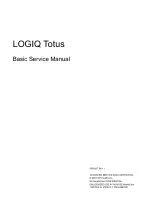
2.3
System Capacity:
The PALMER SAFETY 2-Person Temporary HLL maximum capacity is two workers simultaneously, with each worker
weighing no more than 310 lbs. inclusive of clothing, tools, etc.
2.4
Anchorage Requirements:
End anchors selected for use with this system must be a minimum of 5,000 lbs. (22.2 kN) for one and two
workers. If used in applications with leading edge hazards, anchorage locations must be selected so that the deflected HLL shall not
come in contact with a leading edge in the event of a fall.
2.5
Total Allowable Free Fall:
OSHA limits free fall to
6’
or less. The HLL system described in this manual is designed to be used overhead and
free fall should be limited to 6’
only.
2.6
PFAS Selection:
Only PALMER SAFETY PFASs may be used in conjunction with this HLL system. The HLL may be used with
PALMER SAFETY energy absorbing lanyards those are ANSI Z359.13 complies and PALMER SAFETY fall arrestor connecting
subsystems.
2.7
Clearance Requirements:
The PALMER SAFETY 2-Person Temporary HLL is designed to react to a fall event by elongating and deflecting
to absorb energy. PFAS attached to the HLL will also elongate during a fall event. Failure to calculate the fall clearance required when
using the system could result in contact with a lower level or obstruction during a fall event and could result in serious injury or death.
See tables and charts below for calculating minimum required fall clearance.
2.7.1
Minimum Required Fall Clearance for One Worker w/EAL
Temporary HLL with EAL Minimum Required Fall Clearance
310 lbs. Maximum User Capacity
Max. One Worker
1
Find Span Length in Table Below
2
Find Freefall Distance in Table Below
3
Required Fall Clearance at the intersection of Span Length and Freefall Distance (see table below)
A.
Overhead Anchorage
B.
Walking/Working Surface
C.
Nearest Lower Level or Obstruction
* Work below HLL to avoid Swing Fall
Freefall Distance (feet)
Figure 3 - 2-Person Temporary HLL with EAL
Minimum Fall Clearance (One Worker)
1
A
2
B
3
C






























